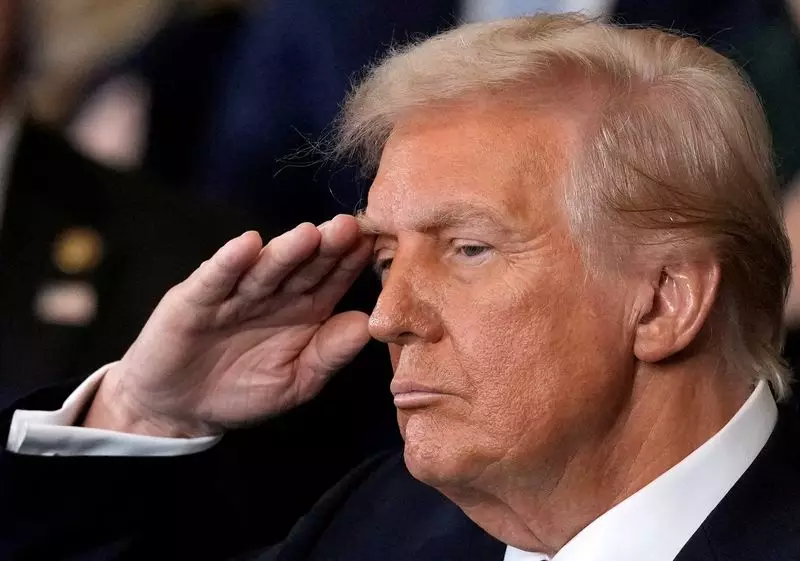On his first day in office, President Donald Trump is poised to unveil a comprehensive trade memo aimed at reassessing America’s trade relationships with key partners: China, Canada, and Mexico. This approach suggests a departure from the immediate imposition of tariffs that many analysts had predicted, which is likely to bring a wave of relief across the global markets. Instead of dramatic tariffs that could destabilize the established trading order, the memo will guide federal agencies in investigating ongoing trade imbalances and perceived injustices in foreign trade practices.
Despite the absence of immediate tariff implementations, the memo reflects Trump’s resolve to reevaluate and modify trade relations to better protect American workers and businesses. His presidential campaign emphasized a vision that sought to transform the United States into a “manufacturing nation once again,” indicating a pivot towards a more nationalistic economic policy. While the immediate impact of this directive on financial markets remains to be seen, it clearly highlights Trump’s intent to reshape America’s trade landscape through a series of calculated steps.
The announcement of a more measured approach to trade relations ignited a rally in global stock markets and a drop in the dollar’s value against various currencies. The euro, Canadian dollar, Mexican peso, and Chinese yuan surged. This reaction underscores a cautious optimism among investors who appreciate the potential for stability that a thorough examination of tariffs and trade practices could bring. With U.S. financial markets closed for the Martin Luther King Jr. Day holiday, stakeholders are left to ponder the potential for long-term adjustments rather than immediate economic shocks.
Industry analysts had anticipated that Trump might swiftly invoke the International Emergency Economic Powers Act to impose tariffs. However, the memo’s signaling of a methodical strategy suggests that the administration is keen on examining the nuances of trade law. This contrasts with the more extreme trade policies of the past and may reflect a deeper understanding of the interdependency of the global economy and the importance of maintaining trade agreements that foster mutual benefits.
During his inaugural address, Trump notably refrained from detailing specific tariff plans, opting instead for a broader discussion of his economic vision. His proposal to establish an “External Revenue Service” aimed at enhancing revenue collection from foreign tariffs and duties raises questions about the operationalization of his trade philosophy. While he posited that taxing foreign entities would enrich Americans, it remains to be seen how such a shift will be enacted without inciting retaliation from other nations.
This strategic pivot follows a pattern observed throughout Trump’s presidency, where initial rashness in foreign trade commitments often yielded to calculated approaches influenced by market conditions and advice from economic advisors. Trump’s ambition to reduce the U.S. trade deficit—primarily with China—is ongoing, as he continues to push for the faithful execution of the existing trade deals, including the agreements negotiated during his first term.
Central to the impending trade assessments is the relationship with China, which has been one of the focal points of Trump’s trade agenda. The impending memo will seek to evaluate China’s adherence to agreements made under the 2020 trade deal. Despite previous commitments for increased purchases of American goods, the backdrop of a global pandemic has complicated compliance complexities and accountability.
The expectation that Trump will revisit renovations to the North American Free Trade Agreement (NAFTA) further illustrates his inclination to assert American interests aggressively. By including Canada and Mexico in his scrutiny, Trump signals his belief in addressing perceived grievances swiftly. The tension between the need for fair trade practices and the risk of trade wars looms large as analysts await the policy’s organic development over the upcoming months.
The forthcoming trade memo by President Trump marks a significant moment of recalibration in U.S. trade strategies. Instead of creating immediate turmoil with widespread tariffs, the focus on systematic evaluations captures a hope for a more sustainable and strategic approach to trade relations. By engaging in careful assessments while continuing to uphold strong trade fundamentals, the U.S. may strike a balance that fosters both domestic economic growth and international cooperation. The success of this approach will ultimately depend on the administration’s ability to navigate the complexities of global trade and the willingness of partner nations to engage in constructive dialogue. As developments unfold, stakeholders will keenly observe the implications of this refined trade strategy on the global economic landscape.

